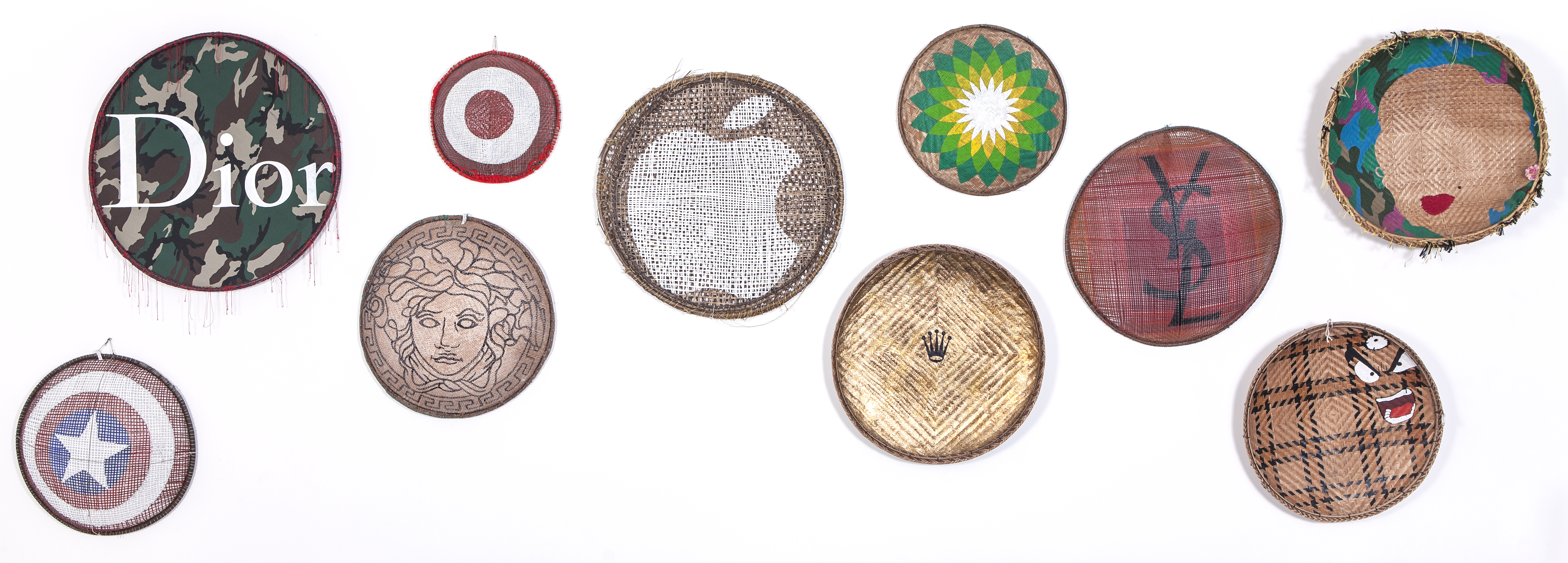Lopez received his degree in engineering from the Universidad Metropolitana (1989). His earliest works involved documentary photography and textile design. At the beginning of the 90s he presented two major installations in Caracas: La sexualidad contaminada (Sala Mendoza, 1992) and Vacivus (Sala RG, 1993). In the former, a maze made up of ten thousand meters of hoses covered the floor and the panels of the exhibition space. For the later work he used five large broken canvases to build a maternal womb representing the process of birth. Spectators passing through them experienced a metaphorical “rebirth”.
During the second half of the 90s Lopez developed a series of sculptural installations grouped under the title Cosmogonas. These symbolic works, in which different representations of his body’s shape and proportions were produced with industrial materials and processes using optical resources (reflection, refraction, transparency), were complemented by performances and allowing the artist to delve into concepts of identity, essence, and the corporeal. The series was presented at the II Bienal Barro de Amrica (1995) and the I Mercosur Biennial (1998).
With the dawn of the new century Lopez’s research into mass media, advertising, consumerism and commercialism, resulted in several series of works that denounced the penetration and deformation produced by these systems in the current global scenario. In the series Chocolate Under Attack (2001) and Camouflage Chocolate Collection (2003) Lopez packed chocolates with images of the Afghanistan war as broadcast on CNN and designs of military uniforms as a denouncement how in the western TV channels in broadcasting distant wars have transformed them into addictive consumer products. In the installation Leaders Market (2002) he presented a stand with fruit and vegetables with labelled with the faces of world leaders (Castro, Hussein, Chvez, Bush, Putin, Aznar, etc.) and the words “100% rotten.” In the museums and galleries where the installation was shown, the fruits and vegetables actually rotted during the course of the exhibition. In the Guapsimas series (developed since 2004) emblems and logos of famous transnational trademarks or pop culture icons have been painted on “wapas,” a variety of Venezuelan indigenous basketry formerly used for utilitarian purposes but now sold as souvenirs.
The tradition of abstract-geometric painting was the focus of the series Mondrian meets Hansaplast and Fantastic Plastic presented in exhibitions held in Paris in 2005 and 2007. Bandages, adhesive tapes and disposable plastic bags became the subject of these works that evoked, not without irony, those of the great masters of geometric abstraction and Venezuelan Kinetic art including Piet Mondrian, Carlos Cruz-Diez and Alejandro Otero. Geometra blanda and Geometra sensible also belong to this series of works.
Lopez also developed a set of works oriented towards environmental themes such as trash and pollution. These began with performances in which Lopez walked the streets of several cities pushing a supermarket cart used to collect garbage and various discarded objects. In addition to recording his actions he produced several works including El pavorreal (2007), an assembly of brooms and brushes of multiple colors; Bella Caracas (2010), a collection of found objects hanging from a shopping cart; and the Rhipsalis series (begun in 2010) that are assemblages constructed with metal structures from broken umbrellas.
Throughout his career, Pepe Lopez has also participated in collective works and projects not only with other artists including Jonathan Gutierrez and Carlos Sosa, but also with regular citizens he has met during his participative street performances. The results have often been multidisciplinary, unexpected, playful and experimental but above all deeply directed at social criticism.
